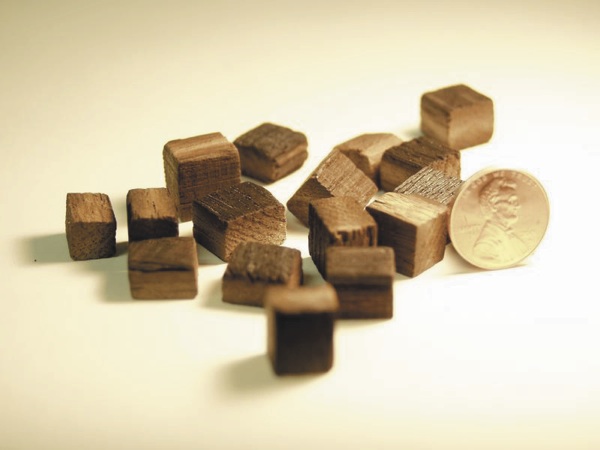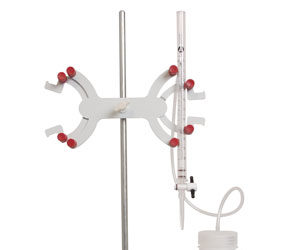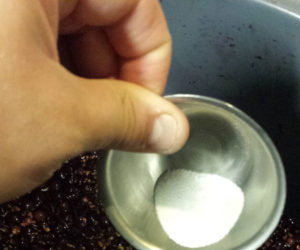Oak can be a fairly polarizing topic when it comes to fans of wine. Wine drinkers will agree that a big red Bordeaux-style wine requires oak. Most red wine fans assume that their favorite steak-accompanying sipper has spent some time on or in oak (with the exception of those young and fruity Beaujolais-style wines that are turned around quickly). But when it comes to commercially available Old World wines, oak may be present in red wines less than some realize. Also white wines are rarely oak aged with a few notable exceptions, like Chardonnay.

So what exactly can oak add to our wines? Well that depends on several factors: Oak origins (including species of oak), toast level, and finally type of oak product used. Let’s dive in . . .
Oak Origins
The three main oak points of origin are the United States (Quercus alba), France (Quercus robur and Quercus petraea), and Hungary/Eastern European Oak (Quercus robur and Quercus petraea). American oak products are considered to have the strongest impacts on wine, cited with vanilla, coffee, coconut, and dill flavors imparted on wines. Your big, fruit-forward wines are generally considered the best to stand up to American oak. French oak is usually going to be from Q. robur trees and they are often known to produce the lowest impact on wines, so generally favored for more subtle, high-end Burgundian-style wines like Pinot Noir and Chardonnay. These barrels can lend a cinnamon, vanilla, and custard character. Hungarian oak often will land somewhere between American and French oak, but leans more towards the French oak, often with slightly more impactful Q. petraea oak wood. Richer, nuttier flavors are often associated with this oak. One thing of note is that the post-harvest conditioning period, which cures the wood, has a big impact on the flavors the wood imparts. Different regions have been shown to produce different flavors despite the same exact wood and curing process thanks to the microflora and microfauna of the region that land and grow on the curing wood.
Toast Level
The next factor that will determine the impact is the toast level. Oak barrels for wine will often have flames applied to the inner staves to create an aromatic boost from the char that occurs. The intensity of heat and duration of the flames will determine the toast level. With that said, not all wine oak barrels need to be toasted. But certain desired characteristic components like vanillin (vanilla) and furfural (caramel) will develop during the toasting process. Some compounds will continue to develop as the toast level increases like 4-methyl guiacol (spice and smoke), but many like vanillin and trans-oak lactone (coconut) will begin to decline after a certain toast level. So for a more coconut and a more woody-type character, go with a less toasted oak. For a more smoke, caramel, and spice character, then a heavier toast will be desired. Winemakers may come across light, medium, medium-plus, heavy, and charred toast levels in available oak products with medium through heavy being the most popular range for winemakers.
Oak Products
When it comes to the oak products, you can go all in and purchase an oak barrel or you can find a myriad of oak alternatives. A quick search online for oak alternatives will come back with quite a few products for winemakers: Staves, spirals, cubes, segments, beans, chips, spheres, and powder. Those are going to be the main formats to choose from. Oak barrels are a huge commitment financial-, space-, and time-wise. I don’t recommend them for anyone until they know for a fact that they are a dedicated winemaker. For everyone else that is not ready to put that kind of money and maintenance time into a full barrel, oak alternatives offer a great solution. Alison Crowe, our Wine Wizard, uses about 1–1.5 g/L of oak powder on most of her reds during fermentation. She’ll then add another “1–2 g/L of larger particle wood, like beans, cubes, or segments” post-fermentation to be aged for another 2–3 months. Finally, depending on the style and goal of the wine, she may add an oak “fan” or “chain” to the aging wine for a final oak kick. For more on her recommendations, digital members can check out: https://winemakermag.com/wine-wizard/the-oak-necessities
Skip the Oak?
Another aspect to keep in mind is that oak is an option, not a requirement in wine. Oak can add structure to wine (tannins), more complex aromatics, and fuller mouthfeel, but it can also mask character as well. Obviously, most white, rosé, and country wines will not be aged on oak for that very reason. But also having some red wine on hand that has not been oak-aged may be beneficial when your winemaking level reaches to the point where blending wine becomes part of your routine. If a wine ends up over-oaked, blending back with some un-oaked red wine may be the solution. Also a technique known as carbonic maceration is one technique that can add complexity to a wine, sort of going in the opposite direction of oak. Enzyme additions are another element that offers a different, more fruit-forward style of wine. When planning your next wine, let your desired style be your guide to oak or not.






